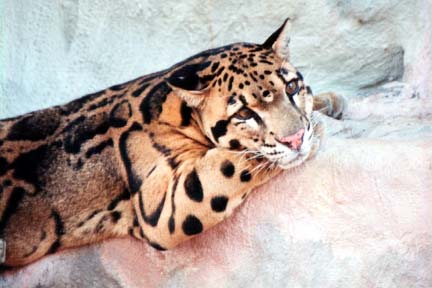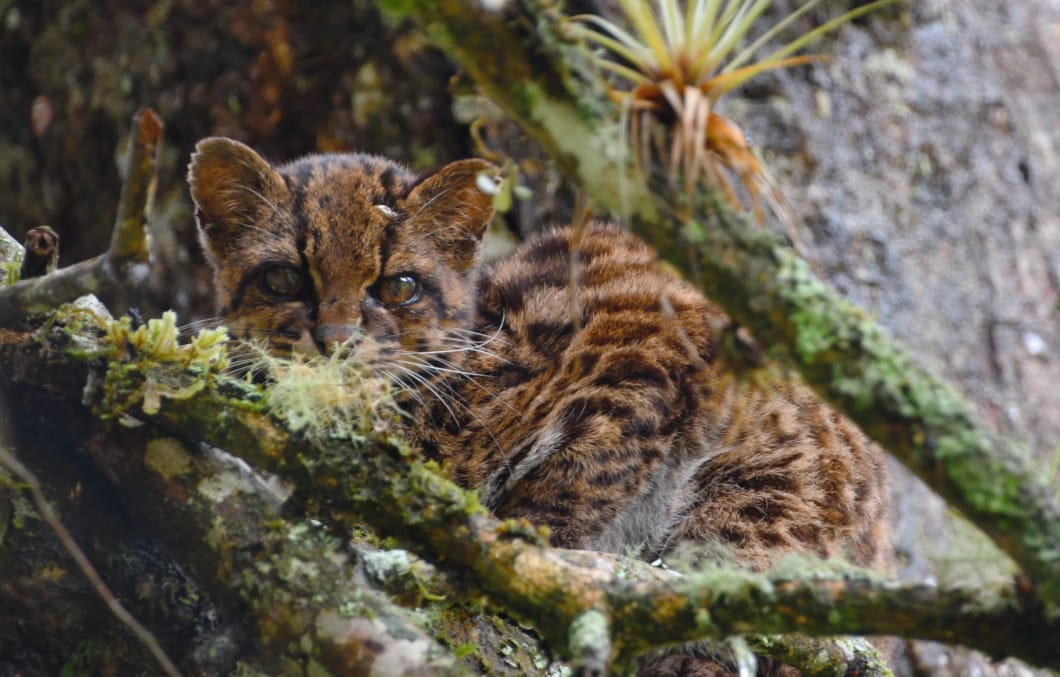Saving Fishing Cats in the Wild
Fishing Cat Summary
The Fishing Cat Working Group (FCWG) was founded in spring 2011 with the aim of compiling and disseminating information about the Fishing Cat (Prionailurus viverrinus), one of four small cat species considered endangered by the IUCN Red List of Threatened Species, and encouraging conservation action for the species. Of the FCWG conservationists, some are involved in surveying ecology and status of the Fishing Cat in several range countries, while others have compiled available information on the historical distribution of the Fishing Cat. In November 2015 these conservationists were able to meet for the very first time at a 5 day international Symposium in Nepal to push global fishing cat conservation forward, each conservationist presented their efforts and shared their experiences. The symposium brought together participants from Bangladesh, Cambodia, India, Sri Lanka and Nepal. Below are examples of the current conservation projects aiding in the protection of the Fishing Cat.
 India: Since 2011 Tiasa Adhya has been documenting and mapping fishing cats outside protected areas in West Bengal. Her project was one of the first attempts to research how Fishing Cat persists in a human- dominated landscape. The study looked at threats to the fishing cat including habitat loss and poaching. Tiasa was instrumental in forming Fishing Cat Protection Committees and works with local communities to initiate a community-owned Fishing Cat conservation area. Big Cat Rescue assisted in funding for this in situ project.
India: Since 2011 Tiasa Adhya has been documenting and mapping fishing cats outside protected areas in West Bengal. Her project was one of the first attempts to research how Fishing Cat persists in a human- dominated landscape. The study looked at threats to the fishing cat including habitat loss and poaching. Tiasa was instrumental in forming Fishing Cat Protection Committees and works with local communities to initiate a community-owned Fishing Cat conservation area. Big Cat Rescue assisted in funding for this in situ project.
Sri Lanka: Since 2014, Ashan Thudugala has been monitoring potential threats to Fishing Cat in the country. He initiated a research and conservation project in the hilly region and organises awareness programmes for school children and students.In Sri Lanka’s hill country, many forest patches are covered or crossed by roads, or have been deforested in recent years to allow for expansion of urban areas. The Fishing Cat population is presumably severely affected by this habitat loss and fragmentation with feeding grounds for Fishing Cat diminishing. In addition road kills are increasing so Ashan also started setting up road signs at spots along highways where Fishing Cats have been killed. Big Cat Rescue assisted in funding for this in situ project.
Bangladesh: Hasan Rahman, Jennifer McCarthy and Kyle McCarthy used a presence-only computer model to predict the distribution of Fishing Cat as more is currently known about dead Fishing Cats in the country than about live ones. Between January 2010 and March 2013, national newspapers reported 82 incidents involving Fishing Cats that were captured by local people; 14 individuals were rescued and released without being monitored; 30 individuals were fatally injured, and the fate of 38 Fishing Cats remained unknown. They called for urgent measures to protect the species.
Dr Jim Sanderson of the FCWG commented: “Fishing Cats are specialists and no larger, generalist species can act as umbrellas to protect their limited and often threatened habitats. Much of Southeast Asia had already been lost. The Javan Fishing Cat subspecies has likely followed the Javan Tiger into extinction. Fishing Cats in Vietnam have no laws protecting them and any that remain might be a lost cause. The existence of Cambodia’s last Fishing Cats depends on bold conservation actions. Despite these setbacks, Fishing Cat conservationists will never give up”
You can read more about work done by the Fishing Cat working group here: https://www.fishing-cat. wild-cat.org
Information obtained from: https://www.wildcat.org/ viverrinus/infos/FCWG2016_ 1stInt_FishingCat_ Conservation_Symposium_ proceedings.pdf







